

Founded, developed, and grew three consulting and technology businesses from concept to sustainable expansion over the last 23 years. Gained extensive cross-functional business, information technology, consulting, and commercial experience in working with clients in government and various industry sectors.
Achieved growth and profit objectives through executive leadership in operations, compelling business models, focused business development, optimised processes in finance, procurement, logistics, and attention to people management. Built management teams and developed leaders. Retained an active role in sales & marketing, personally closing many significant professional services engagements.
Influenced strategic decisions, facilitated board-level interventions and redesigned corporate strategy, interfaced with investors, investment bankers and analysts. Consulted to clients on product design, innovation, development, and product strategy, offering innovative solutions that create change and impact customers' top and bottom line.
Introduced commercial and technology concepts, products and solutions to business leaders, experts, and analysts internationally. In the process, honing facilitation, public speaking, co-design, and innovation skills.
Specialist skills in consulting, strategy, innovation, solution design and have been recognised as a thought leader in Digital Transformation, Digital Disruption, the Internet of Things, Smart Cities, Govtech, Fintech, Data Privacy & Cyber Security.
Available For: Authoring, Consulting, Influencing, Speaking
Travels From: Dubai
| Gert Botha | Points |
|---|---|
| Academic | 0 |
| Author | 15 |
| Influencer | 95 |
| Speaker | 39 |
| Entrepreneur | 85 |
| Total | 234 |
Points based upon Thinkers360 patent-pending algorithm.
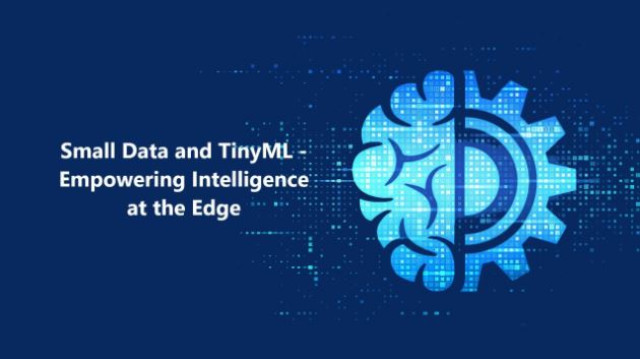 Small Data and TinyML - Empowering Intelligence at the Edge
Small Data and TinyML - Empowering Intelligence at the Edge
Tags: Digital Disruption, Digital Transformation, IoT
Tags: AI, Future of Work, Leadership
Tags: AI, IoT, Sustainability
Tags: Analytics, Digital Transformation, IoT
 The Data Privacy Contradiction
The Data Privacy Contradiction
Tags: Privacy, COVID19
 Identity Centric Digital Trust - The Technology Solution for a Future Connected World Today
Identity Centric Digital Trust - The Technology Solution for a Future Connected World Today
Tags: Cybersecurity, Digital Transformation, Digital Disruption
 The UAE is a world Technology Leader in the making. Gaining rapid interest globally with the world’s first unified identity solution - Hive One ID
The UAE is a world Technology Leader in the making. Gaining rapid interest globally with the world’s first unified identity solution - Hive One ID
Tags: Digital Disruption, Innovation, IoT
 Single Identification Technology
Single Identification Technology
Tags: Analytics, Digital Transformation, IoT
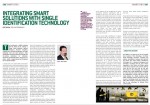 Integrating Smart Solutions with Single Identification Technology
Integrating Smart Solutions with Single Identification Technology
Tags: IoT, Climate Change, Smart Cities
 The difference between Successful and Unsuccessful People
The difference between Successful and Unsuccessful People
Tags: Leadership
 What happens after the “Internet of Things”?
What happens after the “Internet of Things”?
Tags: Digital Transformation, IoT
 Seamless user experience with ‘wireless intelligent sensing technology’
Seamless user experience with ‘wireless intelligent sensing technology’
Tags: Digital Transformation, Digital Disruption, Emerging Technology
 Product Launch - Wireless Sensing Technology
Product Launch - Wireless Sensing Technology
Tags: IoT, Startups, Marketing
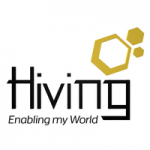 Hiving Technology
Hiving Technology
Tags: Digital Transformation, Digital Disruption, IoT
 WiST - Wireless Sensing Technology
WiST - Wireless Sensing Technology
Tags: Digital Disruption, Innovation, IoT
 EVA Consulting Group
EVA Consulting Group
Tags: Innovation, Entrepreneurship, Business Strategy
Tags: Digital Disruption, Emerging Technology, IoT
Tags: Digital Disruption
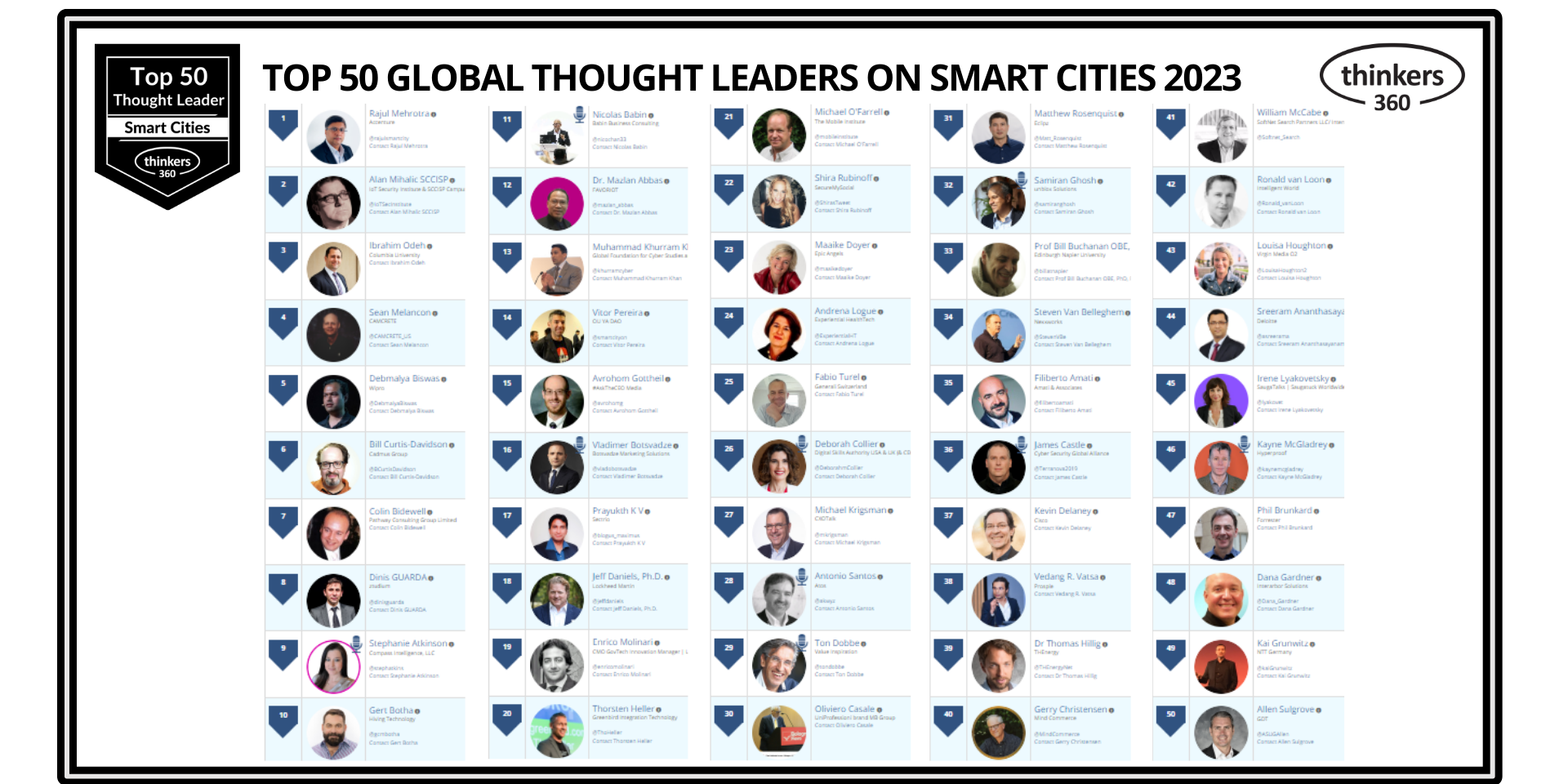 Tenth on Top 50 Global Thought Leaders and Influencers on Smart Cities 2023
Tenth on Top 50 Global Thought Leaders and Influencers on Smart Cities 2023
Tags: Smart Cities
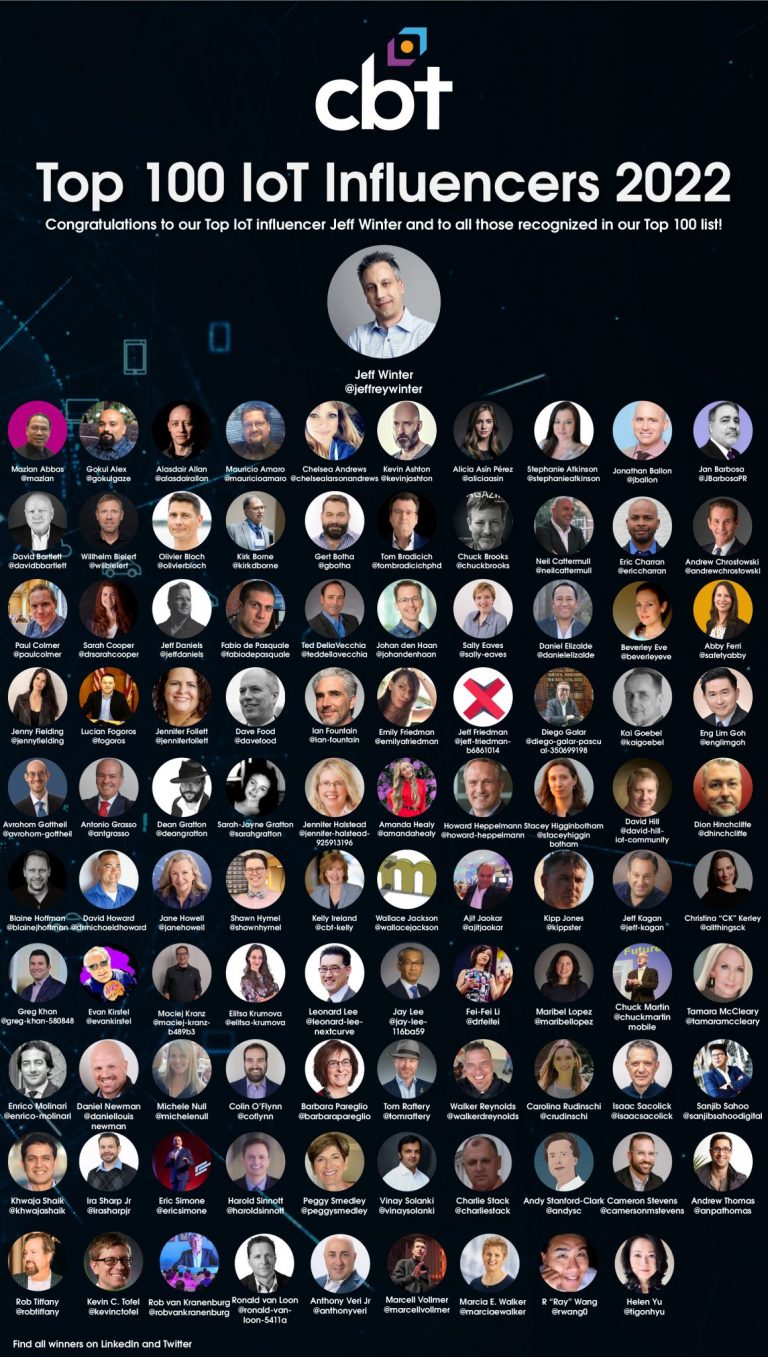 CBT Top 100 IoT Influencers 2022
CBT Top 100 IoT Influencers 2022
Tags: IoT
Tags: GovTech
Tags: IoT
Tags: Digital Disruption
Tags: IoT
Tags: Smart Cities
Tags: Climate Change
 Top 50 Global Thought Leaders and Influencers on Smart Cities (February 2021)
Top 50 Global Thought Leaders and Influencers on Smart Cities (February 2021)
Tags: Smart Cities
Tags: GovTech
 Top 50 Global Thought Leaders and Influencers on Digital Disruption (July 2020)
Top 50 Global Thought Leaders and Influencers on Digital Disruption (July 2020)
Tags: Digital Transformation, Digital Disruption, Innovation
 Top 50 Global Thought Leaders and Influencers on Digital Transformation (July 2020)
Top 50 Global Thought Leaders and Influencers on Digital Transformation (July 2020)
Tags: Digital Transformation
Tags: Privacy
 Thinkers360 leaderboard for the top 50 global thought leaders and influencers on Startups
Thinkers360 leaderboard for the top 50 global thought leaders and influencers on Startups
Tags: Lean Startup, Startups, Entrepreneurship
 Top 50 Global Thought Leaders & Influencers on HealthTech
Top 50 Global Thought Leaders & Influencers on HealthTech
Tags: Digital Disruption, IoT, HealthTech
 3rd position on Top 50 Global Thought Leaders and Influencers on Internet of Things (February 2020)
3rd position on Top 50 Global Thought Leaders and Influencers on Internet of Things (February 2020)
Tags: Digital Disruption, Emerging Technology, IoT
 Top 50 Global Thought Leaders and Influencers on Design Thinking
Top 50 Global Thought Leaders and Influencers on Design Thinking
Tags: Design Thinking
 Top 50 Global Thought Leaders and Influencers on Customer Experience
Top 50 Global Thought Leaders and Influencers on Customer Experience
Tags: Customer Experience, Digital Transformation, Emerging Technology
 44th position on the Top 50 Global Thought Leaders and Influencers on Cybersecurity
44th position on the Top 50 Global Thought Leaders and Influencers on Cybersecurity
Tags: Cybersecurity, Digital Transformation, Privacy
 14th position on Top 50 Global Thought Leaders and Influencers on Digital Disruption
14th position on Top 50 Global Thought Leaders and Influencers on Digital Disruption
Tags: Digital Transformation, Emerging Technology, IoT
 4th position on the Top 20 Global Thought Leaders and Influencers on Internet of Things
4th position on the Top 20 Global Thought Leaders and Influencers on Internet of Things
Tags: Digital Transformation, Emerging Technology, IoT
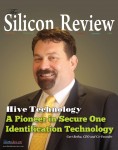 Hive Technology a pioneer in secure one Identification technology
Hive Technology a pioneer in secure one Identification technology
Tags: Customer Experience, Digital Disruption, IoT
Tags: IoT
 Industry 4.0 – The foundation of future Smart Cities
Industry 4.0 – The foundation of future Smart Cities
Tags: IoT, GovTech, Smart Cities
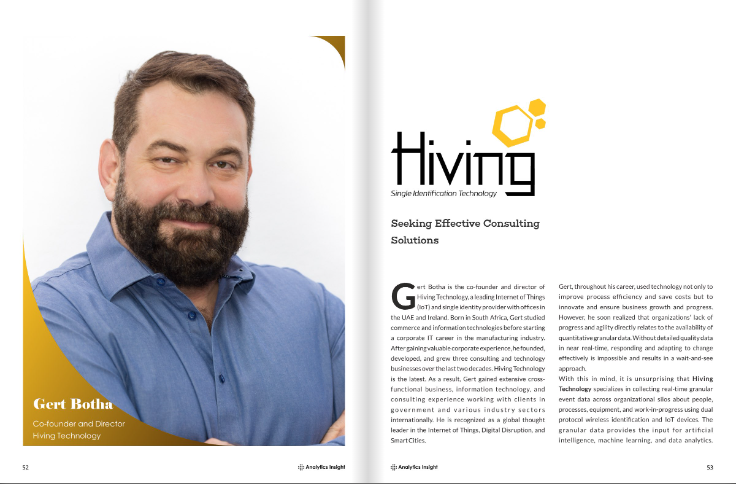 Granular Data - the key to an agile progressive organisation.
Granular Data - the key to an agile progressive organisation.
Tags: Design Thinking, Digital Transformation, IoT
 Meet the Co-Founder of Hiving Technology
Meet the Co-Founder of Hiving Technology
Tags: Innovation, Lean Startup, Leadership
Tags: Entrepreneurship, Leadership, Startups
Tags: AI, Digital Disruption, IoT
 Identity Management coping with growing market Expectation
Identity Management coping with growing market Expectation
Tags: Customer Experience, Digital Transformation, IoT
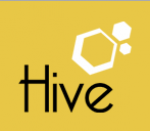 Unique Identity System- The Hive One ID's (Single Identification Technology) entry into India Ushers The Nest Technological Revolution
Unique Identity System- The Hive One ID's (Single Identification Technology) entry into India Ushers The Nest Technological Revolution
Tags: Digital Transformation, Digital Disruption, Smart Cities
Tags: Customer Experience, Digital Disruption, Digital Transformation
 Single Identification Technology
Single Identification Technology
Tags: Digital Transformation, IoT, Supply Chain
Tags: Digital Disruption, Digital Transformation, Marketing
 Why should you be open to change
Why should you be open to change
Tags: Digital Disruption, Digital Transformation, Innovation
Tags: Design Thinking, Digital Disruption, Digital Transformation
Tags: Digital Disruption, IoT, Marketing
Tags: Customer Experience, Marketing, Social
Tags: FinTech, HealthTech, Marketing
Tags: Digital Disruption, Digital Transformation, Emerging Technology
 200 CX Thought Leaders to follow to Kickstart 2021
200 CX Thought Leaders to follow to Kickstart 2021
Tags: AI, Customer Experience, IoT
Tags: Digital Disruption, Digital Transformation, FinTech
 Arab Future Cities Summit Dubai 2015 – Dubai, UAE
Arab Future Cities Summit Dubai 2015 – Dubai, UAE
Tags: Digital Disruption, Emerging Technology, IoT
Tags: Cybersecurity, Digital Transformation, Smart Cities
Tags: Cybersecurity, Design Thinking, Smart Cities
Tags: Digital Disruption, Innovation, Smart Cities
 22nd GCC Smart Government and Smart Cities Conference – Dubai UAE
22nd GCC Smart Government and Smart Cities Conference – Dubai UAE
Tags: Digital Transformation, Innovation, Smart Cities
Tags: Customer Experience, Digital Transformation, GovTech
 IOTX 2016 – Dubai, UAE
IOTX 2016 – Dubai, UAE
Tags: Digital Transformation, Innovation, Smart Cities
 IO India Conclave 2015 – Goa, India
IO India Conclave 2015 – Goa, India
Tags: Digital Transformation, Innovation, IoT
 The Euromoney Qatar Conference 2015 – Doha, Qatar
The Euromoney Qatar Conference 2015 – Doha, Qatar
Tags: Customer Experience, Digital Transformation, Innovation
Tags: Digital Disruption, Digital Transformation, Innovation
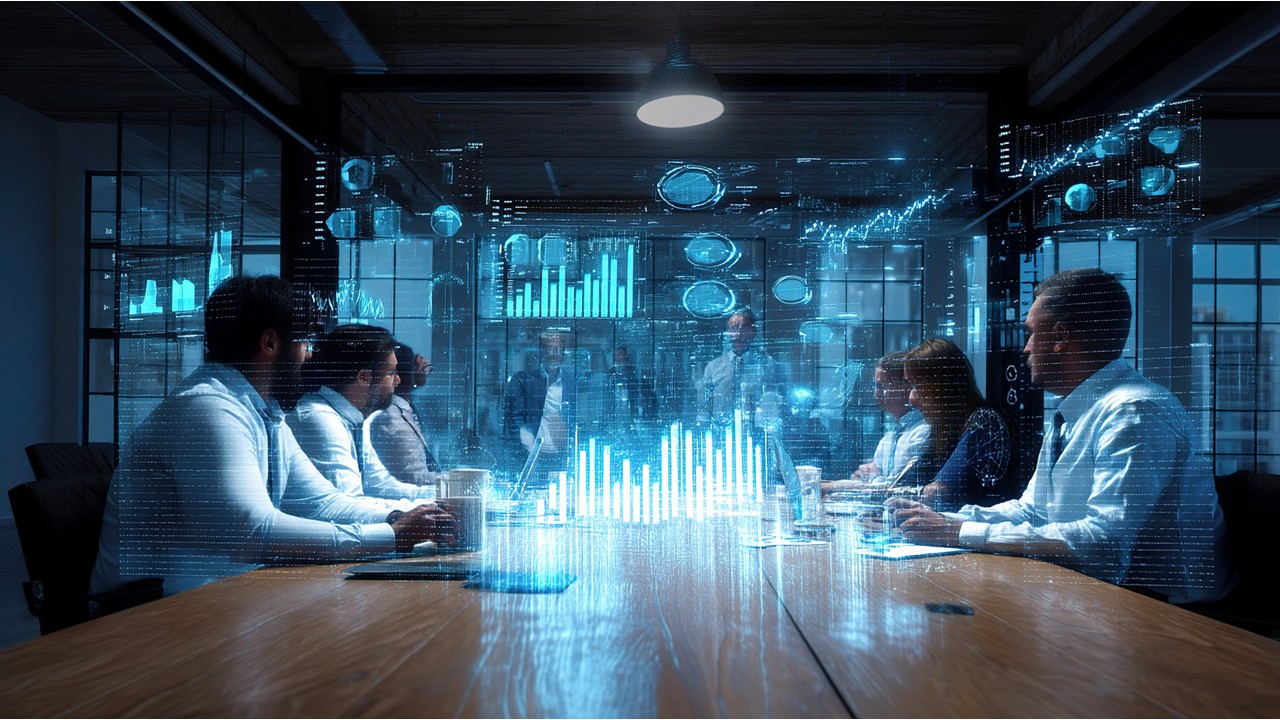 Your Biggest Liability Isn't on the Balance Sheet: A Board's Guide to the Data Delusion
Your Biggest Liability Isn't on the Balance Sheet: A Board's Guide to the Data Delusion
For years, boards have been approving multi-million-dollar AI and digital transformation projects. Yet many are failing, not because of the technology, but because of a foundational flaw management isn't talking about—a flaw so profound that, according to the MIT Sloan Management Review, the cost of insufficient data is already consuming between 15% and 25% of total revenue for most companies. This isn't a minor operational drag; it's a direct tax on the top line. For directors and investors, it’s time to start asking more complicated questions, because the most significant risk to your company’s future isn't the failure to invest in AI, but the quality of the data that renders those investments worthless.
In boardrooms across the globe, a familiar ritual plays out. A presentation, rich in the vocabulary of Industry 4.0—Artificial Intelligence, digital twins, and predictive analytics —culminates in a significant capital expenditure request. The promised returns are astronomical: radically improved efficiency, the elimination of unplanned downtime, and a decisive competitive edge. The board, fulfilling its duty to drive innovation and shareholder value, approves the investment.
Yet, for a troubling number of these companies, the promised revolution never arrives. The projects stall in "pilot purgatory," the ROI remains a rounding error, and the organisation is left with a costly hangover of disillusionment. When directors ask for an explanation, the answers are often vague, citing the complexity of AI or the challenges of integration. The real culprit, however, is a far more fundamental and damning failure —one that rarely makes it into a PowerPoint slide: the company’s data is junk.
This is the "data delusion," and for any board director or investor, it should now be considered a primary strategic risk. The failure to establish a high-fidelity data foundation is not a mere technical oversight; it is a profound business malpractice that wastes capital, destroys shareholder value, and leaves a company dangerously vulnerable. The most significant liability in your organisation today may not be debt or litigation; it may be the vast, unacknowledged swamp of low-quality data upon which your entire digital strategy is being built.
The Fiduciary Duty to Scrutinise "Digital-Washing"
As stewards of the company, a board's fiduciary duty extends beyond financial oversight to strategic risk management. In the digital age, this must include a rigorous scrutiny of a company's data infrastructure. The market is currently rife with "digital-washing"—the practice of using the hype around AI to mask a lack of genuine capability. Companies boast about the petabytes of data they collect, but they are silent on its quality.
This is where directors must become more discerning. The volume of data is a vanity metric; the fidelity of data is what drives value. A company collecting averaged vibration data every 15 minutes from a critical asset is not in the same league as a competitor capturing the full, high-frequency vibration waveform from that same asset at regular intervals and on exception if any reading materially changes between scheduled readings. The former collects digital noise; the latter collects actionable intelligence. The former can create a pretty dashboard; the latter can prevent a multi-million-dollar failure.
Approving an AI project without first auditing the underlying data fidelity is the equivalent of approving the construction of a skyscraper without conducting a geological survey of the foundation. It is a dereliction of strategic oversight.
Five Questions Every Director Must Ask a CEO
To cut through the digital washing and assess the true health of your company's digital strategy, directors need to move beyond high-level promises and ask probing, specific questions. The next time a digital transformation budget is on the agenda, consider this your essential questionnaire:
Data as a Core Asset
The companies that will dominate the next decade will be those whose boards recognise that data infrastructure is not an IT expense. It is a core strategic asset, as critical as the company’s factories, intellectual property, or brand.
Therefore, the investment in a high-fidelity data platform must be evaluated differently. It is foundational. It enables not just one application, but all future AI and analytics initiatives. It is the bedrock upon which future efficiency, innovation, and resilience will be built.
As a director or investor, your role is to look beyond the immediate horizon. The pressure to "do something with AI" is immense, but the risk of doing it wrong is catastrophic. By demanding a culture of data discipline and prioritising the investment in a high-fidelity foundation, you are not just mitigating a hidden liability. You are steering the organisation toward a future of genuine, sustainable, and defensible value creation.
Tags: AI, IoT, Digital Twins
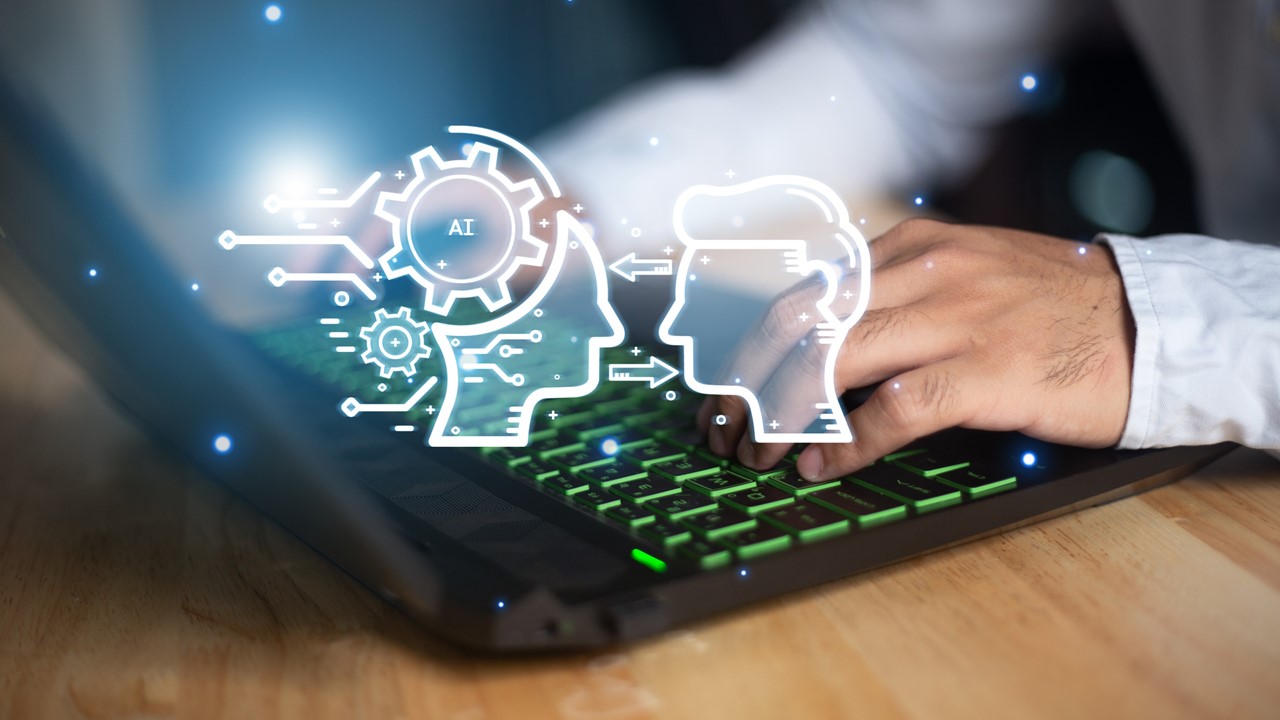 The Uniqueness of Humans and our Place in the Age of AI
The Uniqueness of Humans and our Place in the Age of AI
In today’s fast-paced, technology-driven world, the incredible advancements in artificial intelligence and automation have transformed how we live and work. Amidst this rapid change, many individuals question their role and value in an increasingly digital landscape. However, this technological era allows humans to rediscover and appreciate their uniqueness.
At a glance, computers and robots surpass human capabilities in many areas, from processing speed to data analysis. Yet, the more we delve into the intricate tapestry of human experience, the more evident it becomes that we possess qualities that are irreplaceable by machines. Beyond logic and algorithms, humans are equipped with emotional intelligence, heart intelligence, creativity, adaptability, and moral judgment – traits that form the essence of our shared humanity.
"The human brain has 100 billion neurons, each neuron connected to 10 thousand other neurons. Sitting on your shoulders is the most complicated object in the known universe."
- Michio Kaku
Sadly, many individuals remain unaware of these unique attributes that define them. In a society often focused on productivity, efficiency, and tangible achievements, the subtle nuances that make us profoundly human are sometimes overlooked. By truly understanding and embracing our innate qualities allows us to find our place in an AI-driven world and enrich our lives and connections with others.
"The intuitive mind is a sacred gift, and the rational mind is a faithful servant. We have created a society that honours the servant and has forgotten the gift."
- Albert Einstein
This article explores the differences between humans and computers, emphasising heart intelligence and the brain-heart connection. By delving into the unique attributes of humans and the implications for the future of work, we hope to shed light on the unparalleled value of human contributions in an increasingly digital age.
There’s a growing tendency to measure human worth against artificial intelligence, machine learning and robotics capabilities. However, this perspective fails to capture what it means to be human. Our uniqueness doesn’t lie in the processing speed of our brains or our ability to perform repetitive tasks – it lies in the intangible attributes that define our humanity. How we think, feel, and connect with others makes us truly unique. In an age where machines seem to encroach on every aspect of our lives, embracing our human qualities and understanding why they matter is more important than ever.
The interplay between the brain and heart and the concept of heart intelligence is something that most people don’t even know exists. Still, it is worth considering as it further highlights the inherent differences between humans and computers.
The notion of heart intelligence is quintessentially human, encompassing a comprehensive range of aspects- emotional, intuitive, and physiological. It encapsulates the heart’s intrinsic wisdom, the emotional insight it imparts, and the physiological consequences of heart coherence on overall health and wellness. This concept is a testament to the intricate interplay between the emotional and physiological facets of human existence, a complexity that the current capabilities of artificial intelligence lack.
"The heart is the most powerful generator of electromagnetic energy in the human body, producing the largest rhythmic electromagnetic field of any of the body’s organs. The heart’s electrical field is about 60 times greater in amplitude than the electrical activity generated by the brain."
- Rollin McCraty
In humans, a profound connection exists between the brain and the heart, often overlooked in the discourse of artificial intelligence. This brain-heart interplay is not merely physiological but also emotional and intuitive. The heart is not just a mechanical pump but an organ with a complex nervous system. This “heart-brain” can communicate with the central brain in our heads through neurological, biochemical, biophysical, and energetic channels. These channels operate concurrently, constituting a sophisticated and holistic communication system within the human body.
For example, the heart sends more information to the brain than the brain sends to the heart. This information can modulate perception, emotional processing, and higher cognitive functions. Furthermore, the heart’s electromagnetic field, which is about 60 times greater in amplitude than the electrical activity produced by the brain, can be detected several feet away from the body. This field encompasses every body cell and radiates outward in all directions into the space around us. The heart’s field changes distinctly as we experience different emotions and can be measured using tools such as heart rate variability (HRV) analysis.
Humans possess emotional intelligence, allowing us to understand, experience, and respond to emotions. This capability fosters empathy, compassion, and nuanced social interactions. Computers can simulate emotional responses but lack genuine emotional experiences.
Human creativity involves intuition, imagination, and novel problem-solving. Computers can generate new outputs based on data and patterns but lack the spontaneous creativity and intuitive leaps that define human innovation.
Humans possess consciousness and self-awareness, enabling introspection and reflection on thoughts, emotions, and experiences. This self-awareness plays a role in personal growth and ethical decision-making. Computers, in contrast, lack consciousness and self-awareness.
Humans can integrate diverse information sources, consider context, and draw on personal experiences for a holistic understanding. Computers process information more compartmentalised and data-driven.
Humans can learn and adapt to new situations without predefined rules. Computers rely on algorithms and data, making them less flexible in novel situations.
Humans can weigh multiple perspectives, values, and consequences in ethical decision-making. Computers can follow ethical guidelines but lack a nuanced understanding of conflicting values.
Considering the above, our uniqueness doesn’t lie in the processing speed of our brains or our ability to perform repetitive tasks – it lies in the intangible attributes that define our humanity. How we think, feel, and connect with others makes us truly unique. In an age where machines seem to encroach on every aspect of our lives, embracing our human qualities and understanding why they matter is more important than ever.
Repetitive, rule-based tasks requiring little human judgment or emotional intelligence are prime for automation. Pattern recognition tasks, like image analysis and fraud detection, may also be automated.
Jobs Where Human Skills Are Crucial
Jobs involving emotional intelligence, creativity, complex problem-solving, and ethical decision-making are less replaceable. These include healthcare, social work, education, art, and leadership roles.
Humans should focus on skills that differentiate us from computers:
As AI transforms the workplace, humans should focus on the unique qualities that set us apart from computers. By embracing heart intelligence, emotional intelligence, creativity, adaptability, and ethical judgment, humans can thrive in an AI-driven world, leveraging technology to enhance, not replace, their inherent abilities.
As artificial intelligence (AI) continues to advance and become a more significant part of our lives, the future promises a coexistence of human intelligence and AI systems. The possibilities of this synergy are vast, with the potential for mutual enhancement and complementary strengths that can benefit various sectors of society. The coexistence of human intelligence and AI is poised to shape how we live, work, and interact in the future.
The coexistence will primarily be in the following areas:
AI systems, powered by machine learning and extensive data analysis, excel at finding patterns, making predictions, and quickly processing vast amounts of information. On the other hand, humans bring emotional intelligence, intuition, ethics, and a holistic understanding of complex situations. Together, AI and humans can collaborate on decision-making, providing data-driven insights and ethical considerations that result in more informed and balanced decisions.
AI has shown promise in augmenting human creativity. AI-powered tools can assist artists, designers, and other creatives by offering suggestions, automating repetitive tasks, and creating new art forms. These tools free up time and energy for humans to focus on higher-level creative processes, pushing the boundaries of what’s possible and exploring new artistic expressions.
AI-driven systems can personalise learning experiences, tailoring educational content and resources to suit individual needs and preferences. AI can help identify gaps in knowledge, suggest relevant learning materials, and adapt the pace of instruction. By working with AI, educators can provide more effective and personalised student support, fostering lifelong learning and personal growth.
AI has the potential to revolutionise healthcare, assisting medical professionals in diagnosis, treatment planning, and monitoring. AI can analyse medical data, such as images and lab results, to detect early signs of disease or predict patient outcomes. Human healthcare professionals can leverage these insights to make more informed decisions, provide timely interventions, and offer personalised treatment plans.
While AI offers numerous benefits, its coexistence with human intelligence raises ethical and moral questions. As AI systems become, more sophisticated, privacy, data security, and decision-making autonomy concerns emerge. Establishing guidelines and regulations that ensure the responsible and ethical use of AI while preserving human agency and control is essential.
In the dawn of this AI age, humans must not lose sight of their unique traits and abilities that set them apart from machines. It is the profound connection between our hearts and brains, the dynamism of our emotional intelligence, and the flexibility of human intuition which AI cannot replicate.
“Artificial Intelligence, no matter how intelligent or advanced, will never possess human heart intelligence, a unique blend of emotional and intellectual capacities. This is the cornerstone of our distinction from machines.”
Humans are not just logical beings but also emotional ones. We feel, empathise, love, and connect deeply, emotionally. We make choices not just based on logic and rationality but also our feelings and emotions. This ability to connect our hearts and minds and make decisions based on both logic and emotion is what we refer to as heart intelligence. This is an area where AI cannot compete.
| Human Intelligence | Artificial Intelligence |
| Heart Intelligence | Cannot replicate the emotional experience |
| Emotionally driven decision-making | Rational and data-driven decision-making |
| Adaptable and flexible learning | Specific and structured learning |
As we continue to explore the potential of AI, we must remember what makes us inherently human. Our values, emotions, and heart intelligence distinguish us from AI. Understanding and leveraging our unique abilities can create a harmonious future where AI and humans coexist, enhancing each other’s capabilities and enriching our collective experiences.
Tags: AI, Digital Disruption, Future of Work
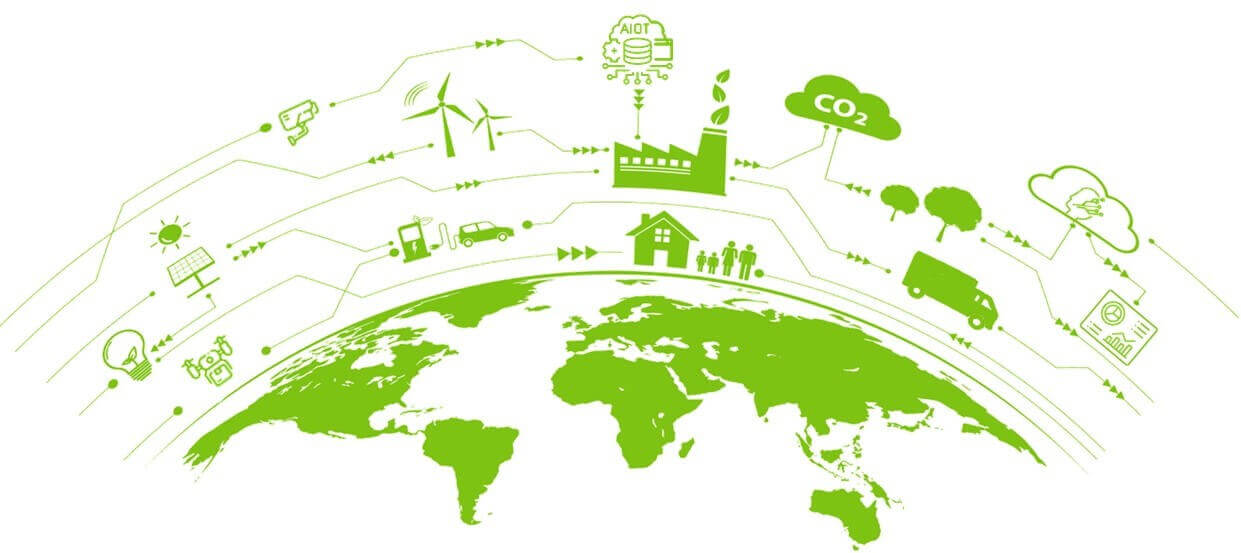 AIoT: A Game Changer for Sustainability
AIoT: A Game Changer for Sustainability
Today, sustainability is critical for businesses of all sizes and industries. Investors expect companies, clients and regulators to take a proactive approach to sustainability, setting ambitious goals and implementing strategies to reduce their environmental impact and promote social responsibility. Achieving this in most industries is only possible with AI0T.
The fusion of two powerful and transformative technologies, Artificial Intelligence (AI) and the Internet of Things (IoT), has given birth to an innovative concept known as AIoT. This convergence is anticipated to revolutionise our daily living and working patterns.
IoT, the Internet of Things, comprises a network of physical devices, appliances, vehicles, and other items. These elements are embedded with sensors, software, and connectivity attributes that enable them to collect and exchange data, painting a picture of a highly interconnected digital landscape.
On the other hand, AI, or artificial intelligence, encapsulates the capacity of machines to learn and execute tasks typically requiring human intelligence. It represents a leap towards creating devices capable of simulating cognitive processes.
AIoT elevates the capabilities of IoT, integrating AI algorithms and machine learning models within the IoT network's devices and systems. This integration empowers the devices to amass and transmit data and analyse and interpret it in real-time, enhancing their intelligence and responsiveness.
For instance, an AIoT-enabled smart thermostat could learn the temperature preferences of its users and adjust the heating and cooling accordingly. This would result in energy savings and significantly improve comfort levels.
In the context of sustainability, the application of AIoT (Artificial Intelligence of Things) emerges as a significant game changer. The key to its profound impact lies in its ability to revolutionise resource utilisation efficiency.
To fully grasp the transformative potential of AIoT, it is crucial to delve into the specifics of its application across various sectors. By examining its use in unique scenarios, we can illuminate the depth and breadth of its capabilities.
Artificial Intelligence of Things (AIoT) plays a significant role in energy efficiency. Its integration with renewable energy systems and IoT devices enables it to optimise performance, reduce energy waste, and boost the utilisation of clean energy sources. These capabilities provide positive environmental impacts and assist organisations in achieving their sustainability objectives.
One of the key ways through which AIoT contributes to sustainability is by enhancing energy efficiency. AIoT systems analyse data obtained from IoT devices, such as smart thermostats, lighting systems, and appliances, to identify patterns in energy usage. These intelligent systems then make informed adjustments to reduce waste. For instance, an AIoT system could discern that a specific room in a building is consistently overheated and adjust the thermostat settings accordingly. Over time, these incremental adjustments compound, leading to significant energy savings.
Beyond IoT devices, AIoT also optimises the performance of renewable energy systems. An illustrative example would be an AIoT system analysing data from solar panels to determine the optimal angle and orientation for maximum energy generation. This strategic optimisation ensures renewable energy systems operate at peak efficiency, reducing reliance on fossil fuel-based energy sources.
AIoT plays a significant role in manufacturing that is geared towards sustainability. Through AIoT, a connected ecosystem is created, empowering manufacturers to monitor and control both inputs and outputs of production in real time. This leads to a substantial improvement in efficiencies, considerable energy savings and, consequently, a cost reduction.
Further to this, AIoT also assists manufacturers in optimising their supply chain management. Employing AI algorithms to analyse data collected from IoT sensors enables manufacturers to pinpoint inefficiencies within their supply chain. Once identified, corrective actions can be taken. The benefits here are multifaceted, with reductions in transportation costs, waste, and improved delivery times.
One of the central roles of AIoT in sustainable manufacturing is its capacity for predictive maintenance. By utilising AI algorithms to sift through data from IoT sensors, manufacturers can forecast potential equipment failures and take proactive measures to prevent costly downtime. This leads to a reduction in maintenance costs, a boost in equipment reliability, and a minimisation of waste. In addition, this technological blend aids in optimising energy consumption by automatically adjusting equipment settings based on real-time data collected from IoT sensors.
An often overlooked benefit of AIoT is its potential to enhance product design. Manufacturers can develop more sustainable products that meet customer needs and minimise environmental impact by analysing customer feedback and usage data. This signifies a strategic step towards sustainability while maintaining a strong focus on customer satisfaction.
Unprecedented technological advancements, particularly in Artificial Intelligence of Things (AIoT), can be a game changer for sustainable smart agriculture. Integrating these two technologies can optimise crop yields while simultaneously minimising resource usage, promoting sustainability in agriculture.
AIoT plays a key role by collecting and analysing data from sensors and other Internet of Things (IoT) devices. Artificial intelligence (AI) algorithms can provide critical insights into the health and growth of crops. This empowers farmers to make informed irrigation, fertilisation, and pest control decisions. The result is improved efficiency, reduced waste, and conservation of natural resources such as water and soil nutrients.
Furthermore, AIoT can considerably reduce agriculture's environmental impact by enabling precision farming techniques. Using AI algorithms to analyse data collected from sensors and drones allows farmers to identify specific areas of their fields that require more or less attention. This targeted approach enables more effective resource allocation, significantly reducing the use of pesticides and fertilisers, which are known to harm the environment. Notably, this approach also reduces the amount of fuel expended in farming operations.
Another essential contribution of AIoT in sustainable smart agriculture is its role in monitoring and managing livestock. By utilising sensors and other IoT devices to collect data on animal health and behaviour, AI algorithms can help farmers to identify potential health issues before they escalate into serious problems. This proactive approach minimises the need for antibiotics and other medications, which can have negative environmental impacts, and significantly improves animal welfare.
In summary, AIoT can revolutionise sustainable smart agriculture by enabling precision farming techniques and enhancing the monitoring and management of crops and livestock. Its potential to reduce agriculture's environmental impact while improving efficiency and productivity underscores its transformative capacity.
AIoT plays a significant role in sustainable smart buildings by allowing for the creation of intelligent systems that can optimise energy consumption, reduce waste, and enhance the overall efficiency of the building.
Using AI algorithms, intelligent buildings can analyse data collected from various IoT sensors to make informed decisions about energy usage. For example, the system can automatically adjust lighting and temperature based on occupancy and weather conditions, reducing energy consumption and cost savings.
AIoT can also help identify areas of the building that could be utilised more efficiently, such as empty conference rooms or unused office spaces. By analysing data from occupancy sensors, the system can optimise the use of these spaces, reducing the need for additional heating, cooling, and lighting.
Moreover, AIoT can be used to monitor and control water and other resources in the building. The system can detect leaks and other issues by analysing sensor data, allowing for prompt repairs and reducing water waste.
Integrating AI and IoT technologies in smart buildings can significantly improve sustainability, energy efficiency, and cost savings. As such, it is becoming increasingly important for building owners and managers to consider the implementation of AIoT systems in their buildings.
Playing a pivotal role in sustainable waste management, AIoT (Artificial Intelligence of Things) provides real-time data generation, collection, and disposal. By exploiting this information, waste management companies can identify inefficiencies, optimise their operations, and reduce waste, thereby implementing more effective waste management strategies.
Sensors enabled by AIoT can be installed in waste bins to monitor the fill level. This valuable data allows waste management companies to optimise their collection schedules, thus reducing redundant trips. Such an approach conserves time and resources and minimises carbon emissions from collection vehicles, contributing significantly to environmental preservation.
AIoT can also make a substantial difference when sorting and classifying waste, making recycling more efficient. Utilising AI algorithms, different types of trash can be identified and sorted accordingly. This innovative method eliminates the need for manual sorting and enhances the accuracy of the sorting process. Consequently, this leads to higher recycling rates and decreased waste sent to landfills.
With its potential to provide real-time data, optimise operations, increase recycling rates and reduce environmental damage, AIoT is set to revolutionise sustainable waste management, marking a significant step towards a sustainable future.
Artificial Intelligence of Things (AIoT) is a powerful tool for enabling real-time data collection and analysis in sustainable smart transportation. By harnessing AI algorithms, data harvested from various sensors and devices is analysed to identify patterns and formulate predictive outcomes. These insights are crucial in optimising traffic flow, diminishing congestion, and, ultimately, minimising harmful carbon emissions.
The deployment of AIoT also significantly aids the progression of autonomous vehicles. These vehicles, more fuel-efficient and less polluting than their traditional counterparts, can communicate with each other and the surrounding infrastructure. This enables them to make real-time decisions to optimise their performance, reducing environmental impact.
In addition, AIoT can be utilised to create intelligent transportation systems that are more responsive to the needs of commuters. For instance, real-time data on traffic conditions and public transport schedules can be intelligently processed to provide personalised recommendations to commuters. These suggestions offer the most efficient and sustainable modes of transport, enhancing the commuter experience.
In summary, AIoT possesses the potential to revolutionise the transportation sector, making it more sustainable, efficient, and responsive to the needs of commuters. Through leveraging the combined power of AI and IoT, we are on the cusp of creating a transportation system that is not only environmentally friendly but also significantly enhances the quality of life for individuals.
The convergence of the Internet of Things (IoT) and Artificial Intelligence (AI) promises a transformative impact on sustainability efforts, paving the way for a greener tomorrow. The amalgamation of these two revolutionary technologies ushers in an era of unprecedented intelligence and efficiency, contributing to a more sustainable world.
The Power of AIoT: By harnessing the capabilities of AIoT, we can significantly reduce energy consumption, minimise waste, and enhance resource efficiency. These advantages benefit humanity and protect our planet, demonstrating the potential of technology as a force for good.
Implications for Executives: For business leaders, understanding and leveraging AIoT's potential is a strategic necessity. Exploring its applications can drive sustainability within your organisation and beyond, leading to beneficial outcomes for the business and broader society.
Tags: AI, IoT, Sustainability
Location: Globally or virtual Fees: Negotiable depending on assignement
Service Type: Service Offered